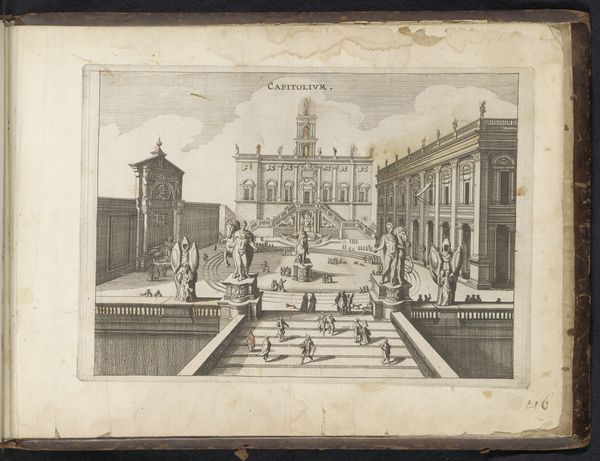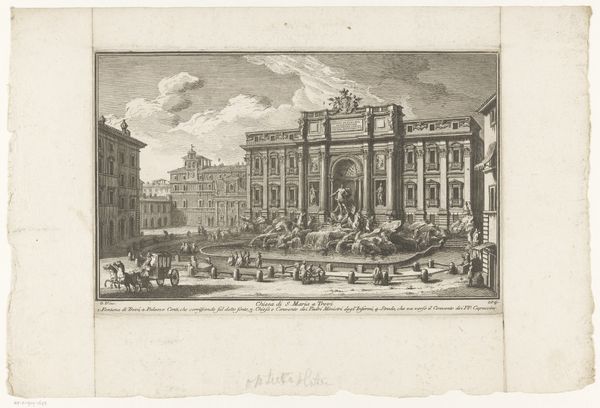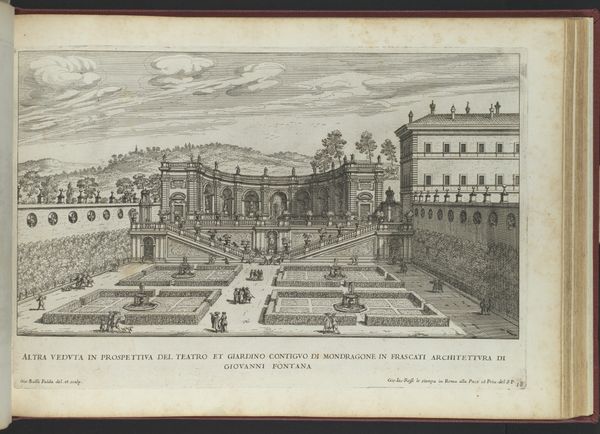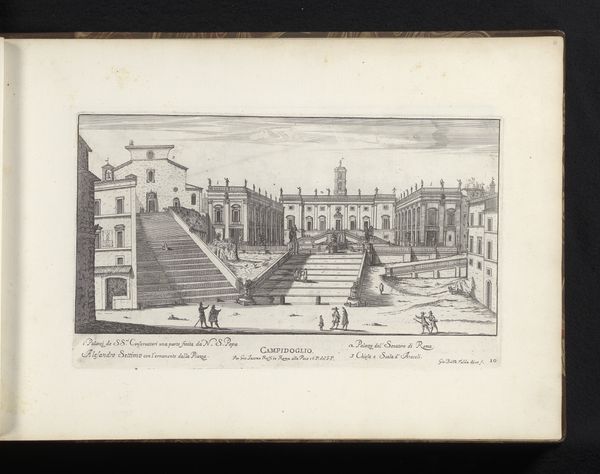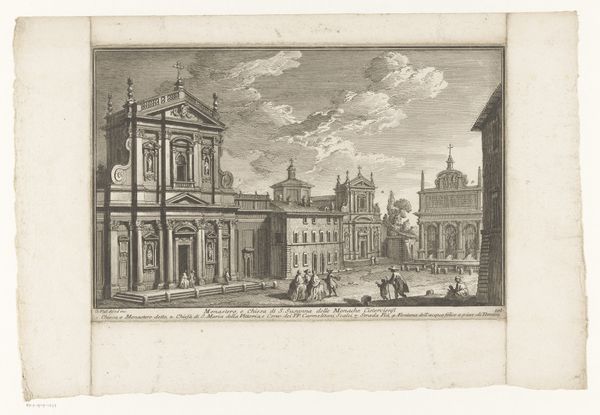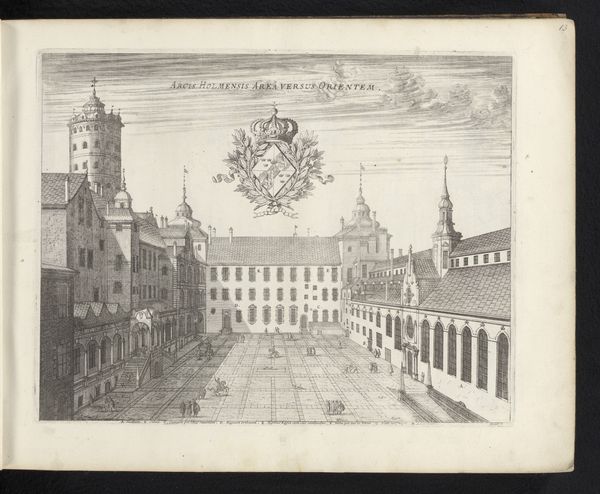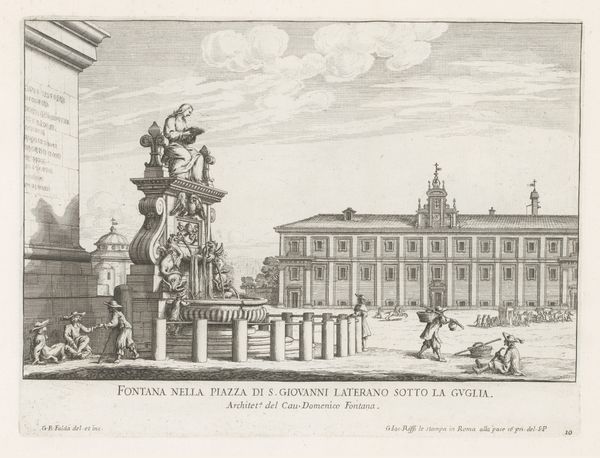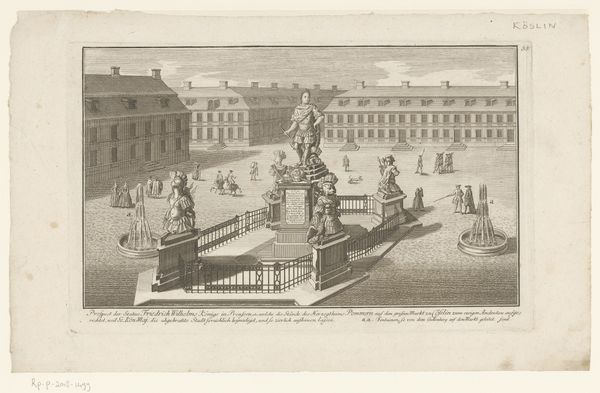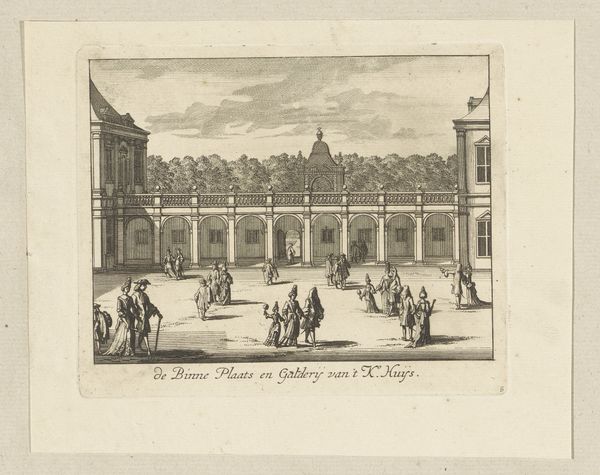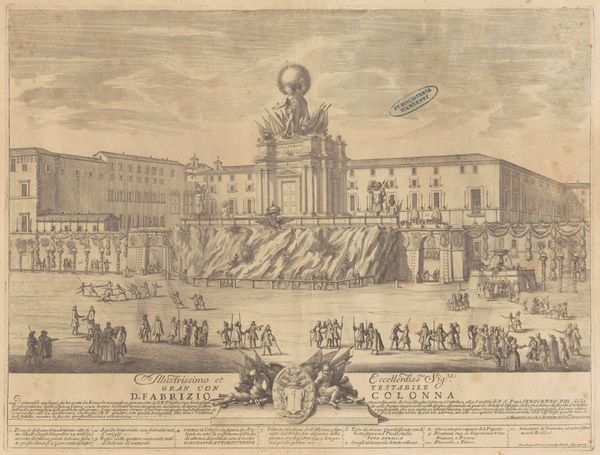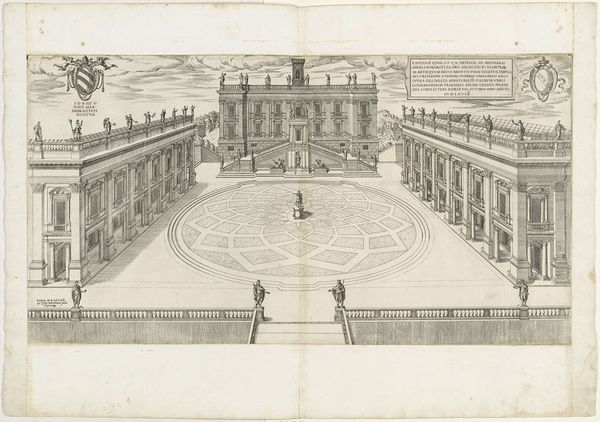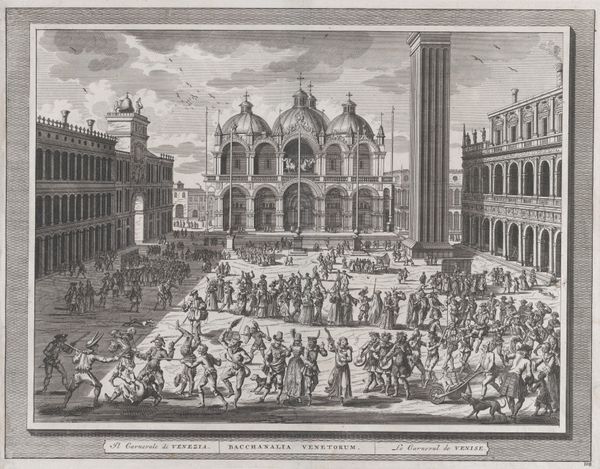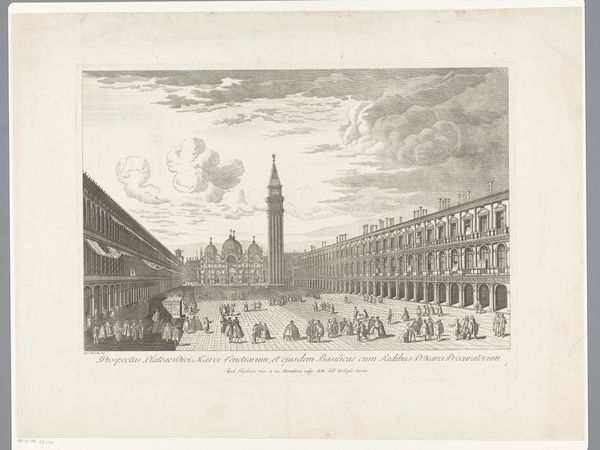
print, etching, engraving, architecture
#
baroque
# print
#
etching
#
old engraving style
#
perspective
#
geometric
#
cityscape
#
engraving
#
architecture
Dimensions: height 196 mm, width 284 mm
Copyright: Rijks Museum: Open Domain
Curator: Good morning. Today, we’re looking at “Gezicht op het Capitool, te Rome,” or “View of the Capitol, Rome,” a print created between 1704 and 1727. Editor: My immediate reaction is of formal grandeur, an almost theatrical perspective accentuated by the precision of line work. It evokes the ordered beauty championed during the Baroque era, the kind that almost feels staged. Curator: Exactly. The intricate details captured through the etching process really highlight the architectonics. Consider how perspective and geometry play such crucial roles; the vanishing point directs your gaze. Editor: Yes, but the perspective also emphasizes the labor of production. The steps—the vast plaza—each mark the manual toil involved in urban planning. What statements does the sheer volume of worked stone communicate regarding societal structure? Curator: An interesting point. Yet, the very geometric shapes—the squares and rectangles recurring in the buildings— speak of a highly structured society, perhaps reflecting a specific semiotic of power, or at least idealized order. Editor: Perhaps. But for me, the printmaking method itself, an anonymous craft handed through generations, speaks more about labor and accessible image circulation than any elitist, intended "order". Were these prints tools for social aspiration? Souvenirs that normalize Rome as the architectural heart? Curator: You bring an interesting point concerning circulation. What I gather, however, when assessing Baroque artwork generally, and in this particular example, is a distinct aesthetic where light and shade accentuate form – giving everything this almost sculptural and material essence that feels monumental and, frankly, designed to express influence. Editor: Influence created through very tangible means of extraction, transport, and collective effort – not so separate, after all. It serves as a fascinating record of both the ideals and the physical labor which gave these powerful urban landscapes shape. Curator: Indeed. Reflecting on its own terms it gives the viewer space to understand Rome’s profound symbolic place through an ingenious use of linear structure, one almost mathematical in precision and impact. Editor: And that understanding arrives, ultimately, through a combination of labor, design, and distributed images—layers of real processes etched into one page.
Comments
No comments
Be the first to comment and join the conversation on the ultimate creative platform.
